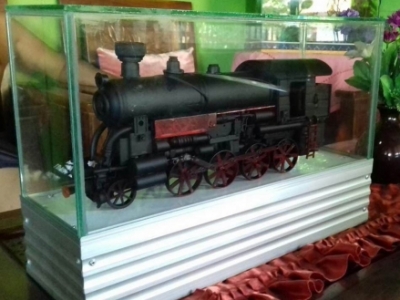
Domestic waste is a serious problem in urban areas. This waste, which consists of organic and inorganic materials, reduces the beauty of the city, creates unwanted odors in several places, and during the rainy season the garbage can obstruct the flow of rivers, resulting in floods. Public awareness in reusing household waste is still low, even though these items can still be reused or converted into other useful forms. This problem inspires a group of UNY students who used the waste as a souvenir in the form of a miniature steam locomotive. They are Enggista Hendriko Delano and Abiyyu Amajida from the Sports Science study program, Asyam Alauddin from the Health and Recreation Physical Education study program, Rizki Oktavianto from the Accounting Education study program and Retno Suci Agustin from the Fine Arts Education study program.
According to Enggista Hendriko Delano, this miniature uses 100% solid waste such as milk cans or spray paint cans, plastics, wood and electronic items such as cables. "The components in this miniature are made from waste," Enggista said. All types of waste can be used and assembled in such a way as to form a miniature train locomotive. He said that it took special care and skills to make this miniature because it depended on one's imagination. The miniatures are placed on wooden placemats and covered with glass. This product can be a home decoration that has educational value about trains. Abiyyu Amajida added that this product is called UNYLoko and is expected to be sold in the Malioboro area which has many souvenir shops. In addition, product marketing is also carried out by utilizing existing social media and online buying and selling stores. "The choice of marketing through the media is based on the ongoing trend in Indonesia," he explained.
Retno Suci Agustin explained that the materials needed for all used goods include cans, cables, bolts, plywood, zinc, wood, glass and PVC pipes. "The tools used are grinders, scissors, pliers, Korean glue, glue gun, cutter, iron saws, solder, hammer and spray paint," Retno said. The manufacturing process starts from product design, which is making a placemat design, setting locomotive size and making cover, after that the assembly process. In this assembly the cans are attached with other used items such as wood, cables and PVC pipes for the locomotive wheels. To connect each parts, glue was applied accordingly. The final step is finishing by giving paint using spray paint cans and placing it on a tray. (Dedy, Tj.Lak)
